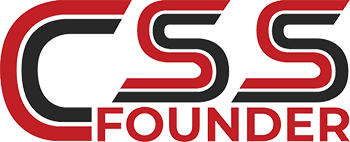Ever heard about the term ‘spam score’? Heard but don’t know what it is actually?
Follow this short blog to know more about the issue of ‘spam score’. Get with us through this blog to know about its reasons and finding solutions.
The percentage of websites found to have indistinguishable characteristics and are expected to be penalized or banned by Google is denoted by the term ‘Spam Score’. This feature has been developed by SEO data and Moz, a software company, in order to examine and calculate the quality of the sites.
What is the scoring system according to the spam score?
- It is important to know what the spam scores tell us about any site. In case a website has a Spam Score of 1, 2, 3, 4 then there is no risk or harm involved. However, you must take precautions and steps to reduce the Spam Score so that it may not increase in the times to come.
- Suppose your blog gets a Spam Score of say 5 or 6, this means that Google is ringing a warning bell for you. Crossing this stage can seriously have serious impacts on your blog.
- In case you get to score either 7, 8, or more than that, you are then expected to rename your domain name. you will also have to look after changing and further enhancing a lot about your SEO strategy to survive in the blogging world.
- You may think that what else can be done. These are simple. We aren’t getting blacklisted. But you have highly mistaken thinking that way. If your site fetches 17 scores it implicates that your site has been blacklisted by Google and from then your website would never appear in the search results.
Reasons for High Spam Score
- Lower availability of the number of pages – it is believed that many spamming sites are loaded with just limited pages thereby the correlation
- Correlation of domain’s TLD with other spam sites – this means that the site has a domain extension like .cc, .pl which are extensively used by other spamming domains
- Length of the domain name – it is also checked whether your site’s root domain and sub-domain length prescribe to those of the spam sites
- Numbers in the domain name – if the domain name contains numerals which are also present in spam sites
- Presence of Doubleclick – now it is believed that in a spammed site, the Doubleclick and tag aren’t existing
- Link to LinkedIn – spam site doesn’t primarily have a connected LinkedIn page. Therefore missing out on this feature can mark you as spam
- A hyphen in names – most of the spammed sites employ a number of hyphens in their domain name
- Abnormal URL length – it is also found that spam sites do have abnormally short or long URL path lengths
- Poison words – if your site uses words like adult content, gaming, pharmaceuticals, and others it may be marked as spam
- Presence of vowels or consonants in the domain name
- Having high or w extraordinary domain links
- An abnormal number of external links to the main content
- Absence of Facebook tracking pixel which is almost every time absent on spammed sites.
- Pages with extra-long meta keywords are often associated with spam sites.
- Absence of Google Tag Manager
- Lacking feature like Google Font API
- A true and trustworthy phone number is absent
- Lacking a reliable email address
And there are few other rationales of getting your site a high spam score leading to banning your website by Google.
Solutions
With these so many reasons, you must be thin about how to lower your spam score? These are the ways:
- The first step can be to clean up your HTML code. Unnecessary HTML may create problems. It is henceforth needed to rectify the HTML errors
- Do not end your address name with digits or numbers
- Trying to sway your clients using fake pretentions and promises can be harmful. Also, avoid using dollar amounts in your subject line
- A text version must be available for your email message. And the text should not differ fully from your HTML message
- Do not disguise words or use incorrect spellings of poison words. Avoid words like Xanax, Levitra, soma, etc, names of drugs and their chemical names, fast delivery, etc
- It is also suggested not to capitalize on your from address or subject line. Totally avoid usage of capitalization in the body of your message
- Don’t use many hyphens in your domain name
- Try to attach a link to your LinkedIn profile and also add the Facebook tracking pixel feature.
- Always give your contact details followed by your email address
- Do not use vowels or consonants in your domain names and try to reduce the met keywords
- Google Tag Manager and Google Font API are essential features that should be included in your site








